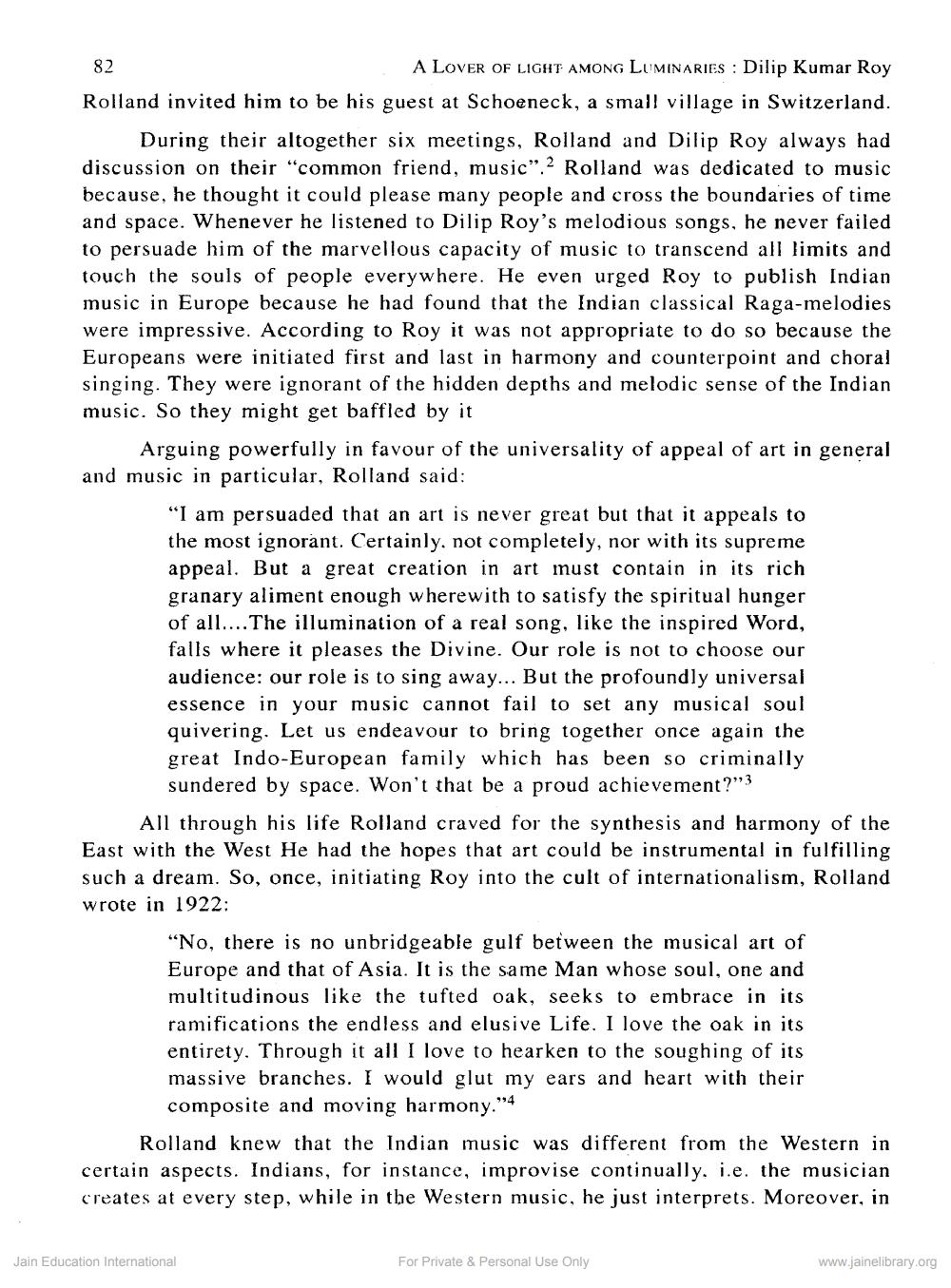________________
82
A LOVER OF LIGHT AMONG LUMINARIES: Dilip Kumar Roy Rolland invited him to be his guest at Schoeneck, a small village in Switzerland.
During their altogether six meetings, Rolland and Dilip Roy always had discussion on their "common friend, music".2 Rolland was dedicated to music because, he thought it could please many people and cross the boundaries of time and space. Whenever he listened to Dilip Roy's melodious songs, he never failed to persuade him of the marvellous capacity of music to transcend all limits and touch the souls of people everywhere. He even urged Roy to publish Indian music in Europe because he had found that the Indian classical Raga-melodies were impressive. According to Roy it was not appropriate to do so because the Europeans were initiated first and last in harmony and counterpoint and choral singing. They were ignorant of the hidden depths and melodic sense of the Indian music. So they might get baffled by it
Arguing powerfully in favour of the universality of appeal of art in general and music in particular, Rolland said:
"I am persuaded that an art is never great but that it appeals to the most ignorant. Certainly, not completely, nor with its supreme appeal. But a great creation in art must contain in its rich. granary aliment enough wherewith to satisfy the spiritual hunger of all....The illumination of a real song, like the inspired Word, falls where it pleases the Divine. Our role is not to choose our audience: our role is to sing away... But the profoundly universal essence in your music cannot fail to set any musical soul quivering. Let us endeavour to bring together once again the great Indo-European family which has been so criminally sundered by space. Won't that be a proud achievement?"3
All through his life Rolland craved for the synthesis and harmony of the East with the West He had the hopes that art could be instrumental in fulfilling such a dream. So, once, initiating Roy into the cult of internationalism, Rolland wrote in 1922:
"No, there is no unbridgeable gulf between the musical art of Europe and that of Asia. It is the same Man whose soul, one and multitudinous like the tufted oak, seeks to embrace in its ramifications the endless and elusive Life. I love the oak in its entirety. Through it all I love to hearken to the soughing of its massive branches. I would glut my ears and heart with their composite and moving harmony."4
Rolland knew that the Indian music was different from the Western in certain aspects. Indians, for instance, improvise continually. i.e. the musician creates at every step, while in the Western music, he just interprets. Moreover, in
Jain Education International
For Private & Personal Use Only
www.jainelibrary.org




